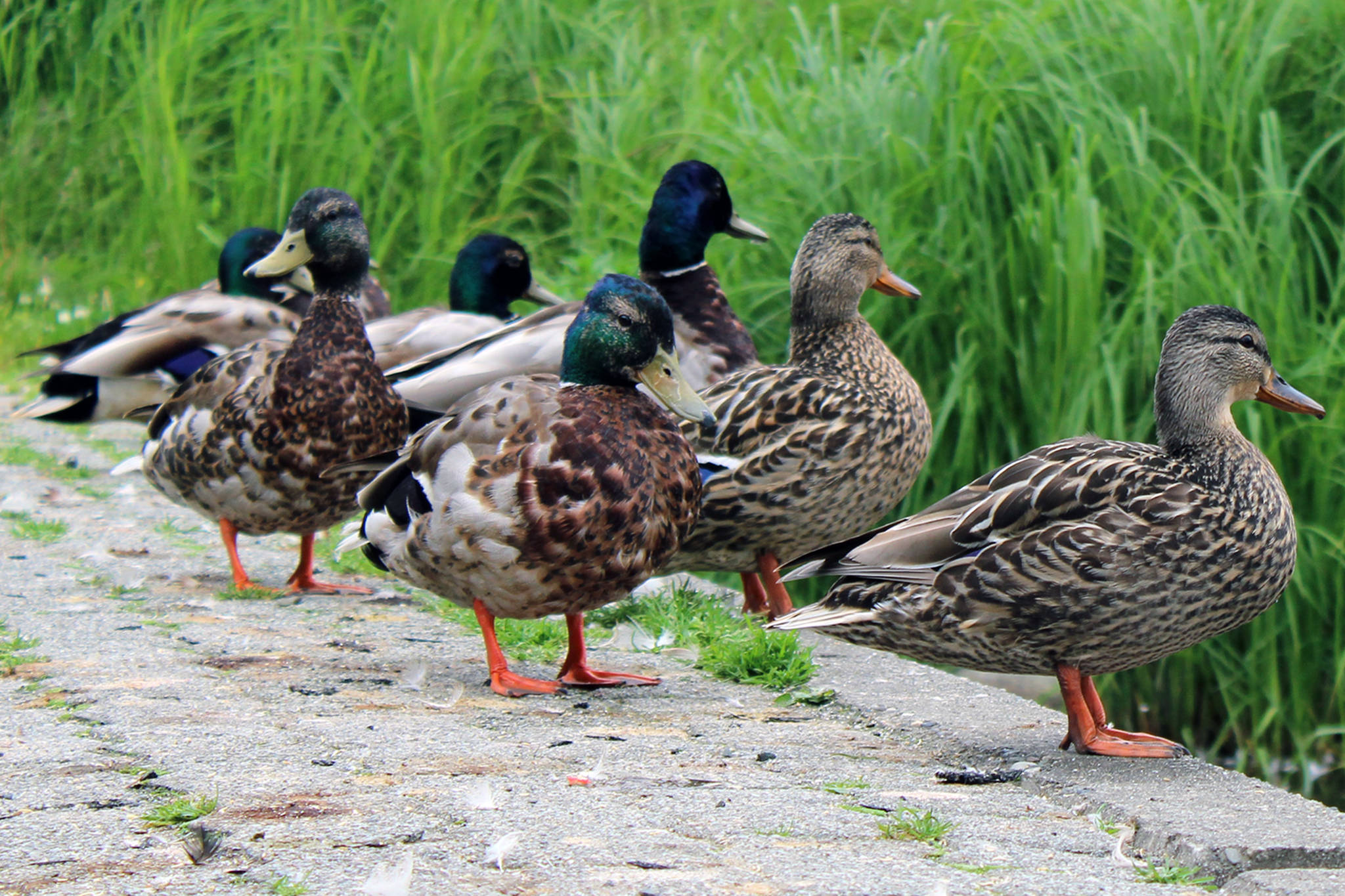I love to walk our trails, just to see what I can see. But sometimes there’s a lot to see in my front yard and pond.
Then, I wear a path from window to window (with side trips to the fridge and tea kettle). This spring has provided some home-based fun.
The shenanigans of the mallards are an annual happening. The ducks start to visit the pond soon after ice-out. Pairs sort themselves out and by late May mama ducks start to bring their tiny ducklings for an occasional visit. This year there were several brood of eight or nine and one brood of just one duckling.
The littlest ones have a hard time jumping up to join mama on the bank for a rest. They zip back and forth in front of her and make lots of futile little leaps. The female often tries several spots before finding one they can all master. Sometimes only part of a brood makes the jump and the rest have to find access at some distance and make a small overland trek. When ducklings are small, the mother broods them, making herself as broad as possible to cover them all, although even then a few heads and tails poke out from under her.
[On the trails: More than meets the human eye]
The unpaired males that have already fathered these broods are hanging about, all revved up and looking for more action. They harass any late-forming pairs and even mothers with babies, causing lots of fuss and flapping. The female with one offspring was persistently pursued, driving her to protest continually and even leave the pond several times. When I opened the windows, I could hear the little one peeping in apparent distress.
A flotilla of visiting ducklings is probably what brought an eagle down to march along the bank, eyeing one brood with malevolent intent. (Yes, I know, eagles have to eat too.) A swoop or two over the water failed, as the brood scooted for cover, and the eagle left, still hungry.
Juvenile juncos had been chip-chipping in the woods along various trails since mid-May. Here at home, there were well-fledged juveniles, of two separate families, by the first week of June, quite able to pick up seeds for themselves but often waiting for dad to deliver. It was the male juncos that stuffed the juveniles with peanut butter and seeds, leading me to suspect that the females were back on eggs again, for second broods. (They can do three or four a year.) The juveniles tried the peanut butter feeder occasionally but looked like they needed some practice, and they preferred to wait for dad.
A male hairy woodpecker made occasional visits to peanut butter and suet, but by mid-June his visits were quite frequent. He hacked out big chunks of suet and carried them off, leaving crumbs for the little birds to pick up. He would swallow several bits of peanut butter but carry away one last load in his bill. So I knew he had a family. And finally, a big, well-feathered fledgling joined his father on the deck railing and begged for peanut butter. I wondered if the mother was tending another young one somewhere.
The chickadees were feeding big kids too. And a great treat was seeing the whole family of nuthatches crowding together on a small block of suet. Two sleek fledglings chipped off bits of suet for themselves, but were also happy to have chunks delivered by the parents.
A bear came to eat horsetail in my front yard. They do this every year. Often they lie down flat and just scoop in the green stuff. This guy got up and wandered up toward the house, sniffing and sniffing, then stood under the edge of the deck to sniff some more. No doubt the aroma of peanut butter was in the air. Before I could say “Oh-oh,” the bear shot up a nearby tree like lightning, just a black blur. It went up above the roof level, out of sight. Now, I’m not too enthusiastic about a bear on my roof (or deck). I raced outside to check the roof, but by then it was already down and gone. The tree was just a bit too far away from roof and deck. But just in case, I have moved the alluring feeder to the other end of the deck; the birds are getting used to the new arrangement.
[Long-distance migrations of the animal world]
One more bear story: A medium-size cinnamon bear came and foraged on horsetail. That gave me time to see that she looked like she’d worn a collar for a long time because her fur was very worn in a circle around the neck, but she had no visible ear tags. Eventually, she started to wander out of sight. Immediately, an alder tree across the pond gave a violent shudder, and a massive glossy-black bear suddenly appeared in the yard. He chomped a couple of horsetails but was much more interested in her, and he followed her off into the neighbors’ yard. It’s that time of year for bears!
• Mary F. Willson is a retired professor of ecology. “On The Trails” is a weekly column that appears every Wednesday.

